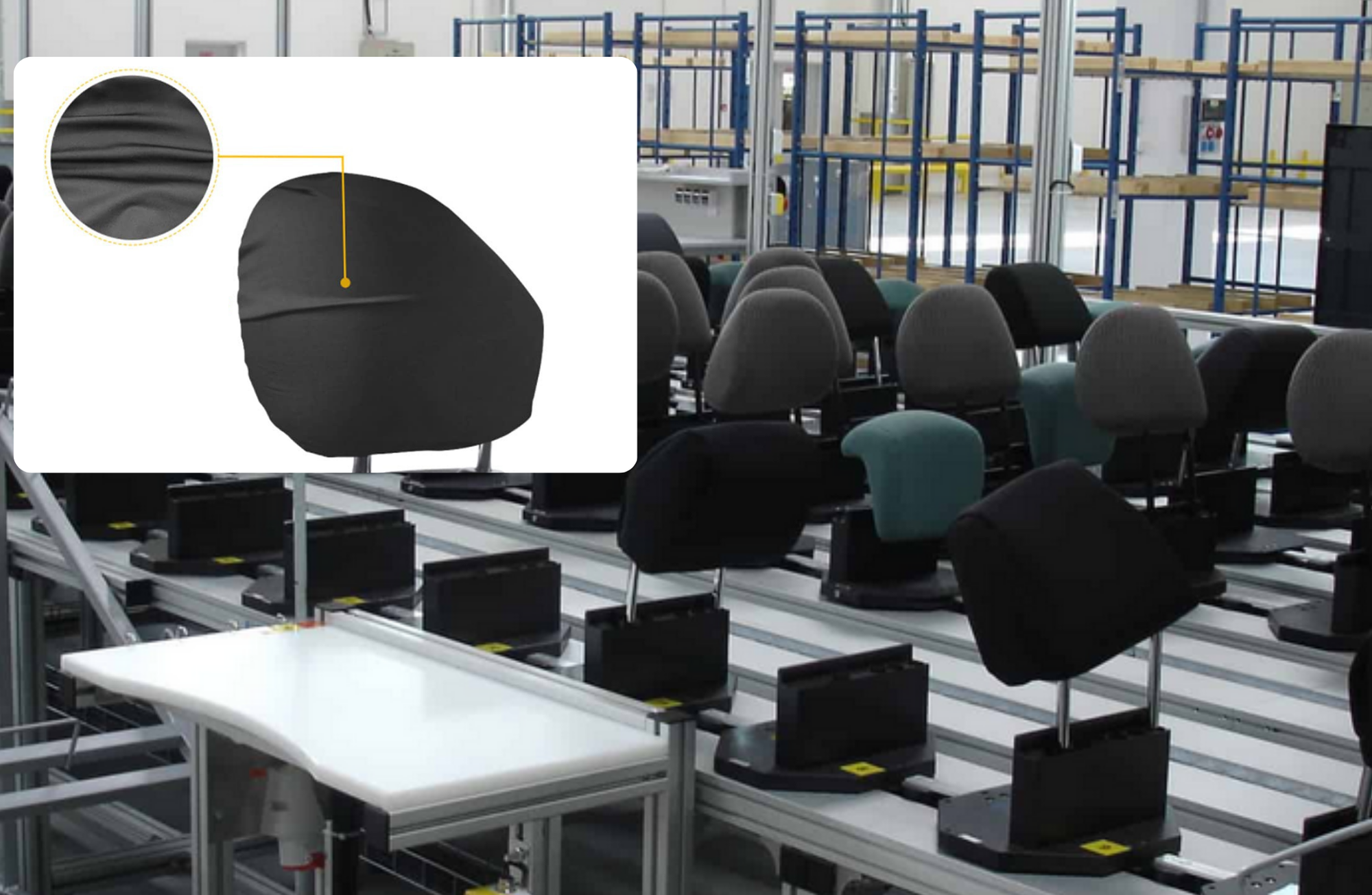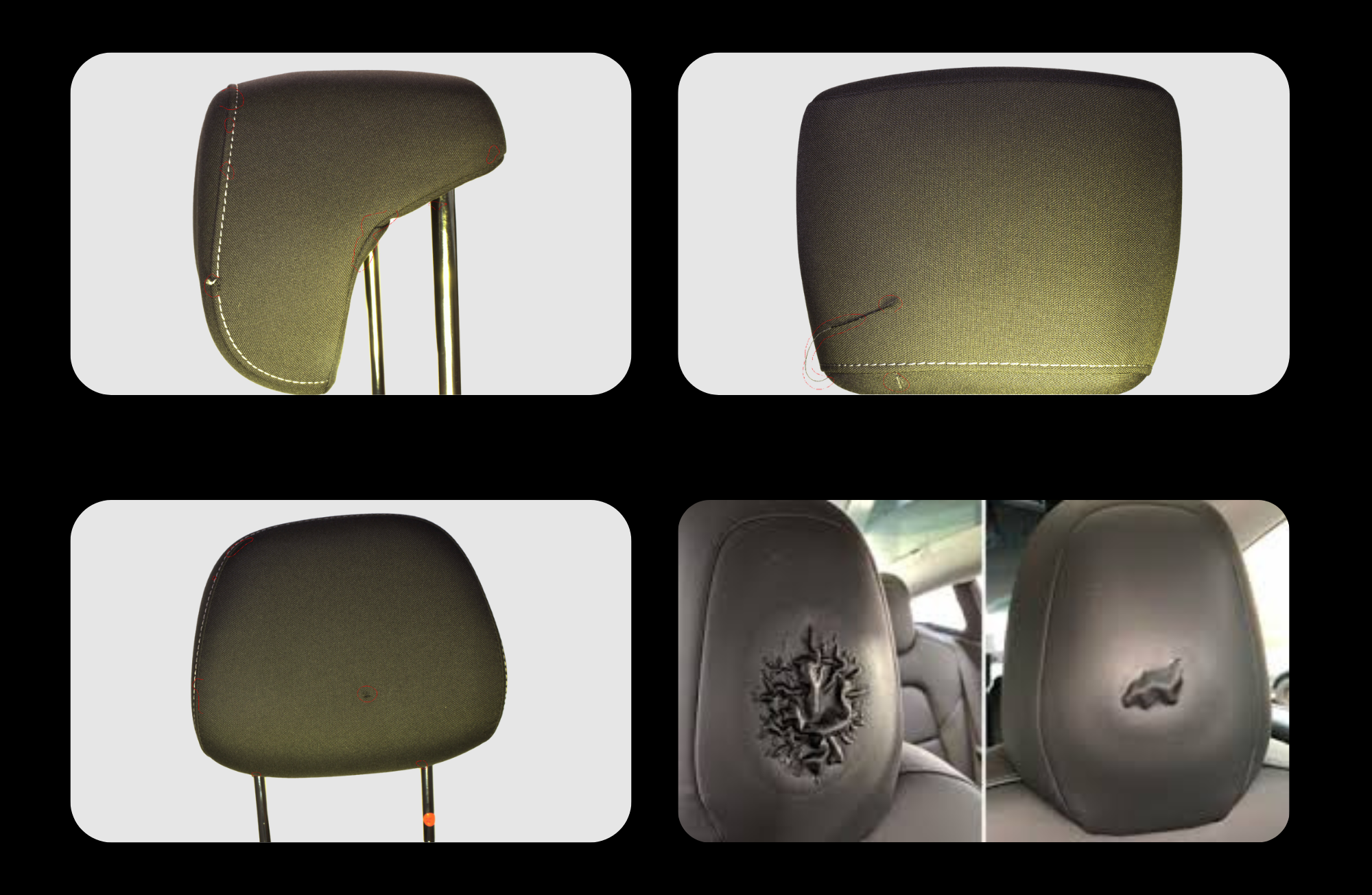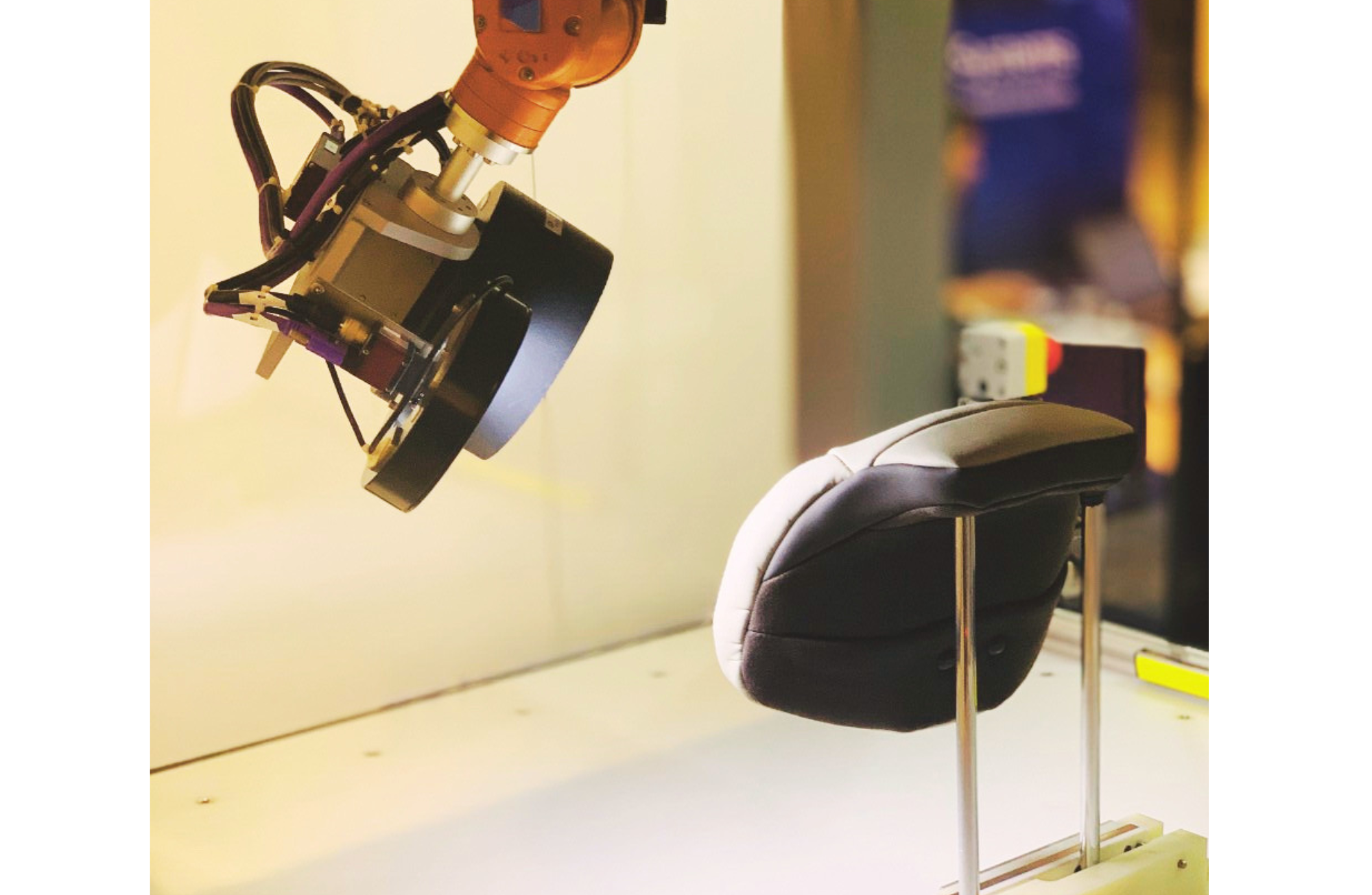Headrest Inspection Automation:Detecting Stitching and Surface Defects Using Machine Vision AOI
Published on: Apr 29, 2025

Written by: Content team, Intelgic
Headrest Inspection Automation:Detecting Stitching and Surface Defects Using Machine Vision AOI
In today’s highly competitive automotive industry, the quality of headrests plays a crucial role in shaping customer perception and maintaining product integrity. As prominent interior components, headrests are subject to close visual and tactile scrutiny—making even the slightest stitching error or leather defect a potential risk to brand reputation and customer satisfaction.
Traditional manual inspection methods are no longer sufficient to meet the growing demands for precision, speed, and consistency. To address these challenges, manufacturers are increasingly adopting Machine Vision Automated Optical Inspection (AOI) systems capable of performing real-time, high-accuracy inspections with minimal human intervention. This advanced solution integrates intelligent vision, precision lighting, and full-surface coverage to detect stitching flaws, surface defects, and micron-level imperfections—ensuring unmatched product quality and reliability.

Defects Detected in Headrests
During manufacturing, headrests are prone to various defects that can affect both their appearance and performance. Common defects include:
1. Stitching Defects
- Skipped, broken, or inconsistent stitches
- Thread tension variations
- Misaligned or incomplete stitching paths
2. Leather Surface Defects
- Wrinkles, stretch marks, or creases
- Surface scratches, abrasions, or cuts
- Color inconsistencies and oil spots
- Surface burns or trapped air bubbles
3. Micron-Level Surface Defects (1mm–5mm)
- Micro punctures
- Tiny blemishes or pitting
- Hairline cracks
- Small dots and surface irregularities
These subtle flaws, especially those in the 1mm to 5mm range, often escape human detection but are critical for premium quality assurance.

Challenges in Headrest Inspection
Inspection of headrests presents several unique technical challenges:
- Complex Geometries: Headrests are available in diverse shapes—rectangular, round, contoured, or ergonomic—making consistent imaging difficult.
- Surface Reflectivity Variations: Leather and synthetic materials reflect light differently, which can confuse simple imaging systems.
- Micron-Level Defect Visibility: Defects smaller than 5mm require extremely high-resolution optics and advanced AI interpretation.
- Production Line Speed: Maintaining high throughput without compromising inspection accuracy demands real-time data processing.
Architectural Configuration of the Machine Vision AOI System
To achieve 360-degree coverage for headrest inspection, Intelgic offers two primary approaches—Multiple Area Scan Cameras or Mechanical System with Area Scan Cameras—to suit different production line setups and requirements.
1.Area Scan Camera in Inspection Process
Option 1: Multiple Cameras for 360-Degree View
In this configuration, a series of high-resolution area scan cameras are strategically placed around the headrest—on the top, front, back, left, and right sides. Each camera captures a specific angle of the headrest, ensuring comprehensive, overlapping coverage of all visible surfaces. This approach is ideal for environments where the headrest can remain stationary, and the cameras can continuously capture high-quality images from all sides.
- Advantages:
- Fixed cameras covering all angles.
- Ideal for production lines with space constraints.
- High-speed inspection with no need for repositioning.
- Fixed cameras covering all angles.
Option 2: Mechanical System with Area Scan Cameras
For more intricate headrest designs, where angles, curves, or seams may be hard to capture with fixed cameras, the mechanical system comes into play. In this configuration, high-resolution area scan camera is mounted overhead in a fixed position. The headrest is rotated and tilted in multiple axis by a mechanically controlled platform. The system manipulates the headrest to present each surface to the cameras, allowing them to capture comprehensive 360-degree images from all directions.
- Advantages:
- Ensures complete visual coverage of every surface, including recessed and curved areas.
- Captures detailed imagery even in hard-to-reach spots (e.g., stitching seams).
- Flexible, adaptable to varying headrest geometries.
- Stable, consistent image framing with precise mechanical control.
- Ensures complete visual coverage of every surface, including recessed and curved areas.
Both methods ensure the headrest is inspected thoroughly for stitching defects, surface flaws, and even micron-level anomalies (1mm–5mm), depending on the choice of inspection configuration.
2. Top Illumination Systems from Front and Back
The inspection system is equipped with two specially calibrated top illumination systems, positioned at the front and back of the headrest. These lighting arrays ensure that the headrest is evenly lit from both directions, providing consistent and uniform illumination for the entire surface.
Top and rear LED lighting arrays provide glare-free, uniform lighting, crucial for enhancing the detection of subtle surface variations such as micro-scratches, thread irregularities, and other minor defects. The strategic positioning of the front and back lighting minimizes shadows and reflections, ensuring that no flaw goes unnoticed.
3. High-Precision Optics for Micron Defect Detection
The optical setup is fine-tuned to detect defects within the 1mm–5mm range, making it possible to catch defects that would otherwise evade even trained human inspectors.
4. Intelgic’s Live Vision AI Software
At the heart of the system lies Intelgic’s proprietary Live Vision AI—an advanced, real-time AI engine designed specifically for manufacturing environments.
The AI software offers:
- Instant Image Processing: Captures and analyzes images at production line speed.
- Deep Learning Models: Trained on an extensive database of leather and stitching defect samples.
- Smart Defect Classification: Differentiates between true defects and harmless natural variations (e.g., leather grain).
- Minimal False Positives: Ensures accuracy without overwhelming operators with unnecessary alerts.
- Continuous Learning: AI models can be updated with new defect data for ongoing improvement.

Advantages of Using Machine Vision AOI for Headrest Inspection
Implementing Machine Vision AOI system offers a wide range of advantages that significantly enhance quality control and operational efficiency in headrest manufacturing:
- Micron-Level Accuracy
Intelgic’s AOI system is engineered to detect even the smallest defects, including stitching errors, scratches, and surface blemishes as small as 1mm to 5mm. This level of precision ensures that no flaw goes unnoticed, helping manufacturers maintain premium product standards.
- High-Speed, Continuous Inspection
The system operates at production-line speed, performing real-time inspection without slowing down manufacturing throughput. This allows for seamless quality checks that keep pace with high-volume operations.
- Exceptional Consistency and Reliability
Unlike manual inspection, which can be influenced by fatigue or subjective judgment, Intelgic’s AI-powered system delivers consistent and repeatable results around the clock. Every headrest is inspected with the same level of scrutiny, regardless of time or shift.
- Full Traceability and Quality Records
Each inspection event is automatically logged with image data and defect metadata, enabling complete traceability and documentation for audits, reporting, and continuous improvement efforts.
- Flexible and Scalable Configuration
The AOI system is designed to adapt to various headrest designs, materials, and stitching patterns. Its modular architecture makes it easy to scale or reconfigure as product lines evolve or expand.
- Reduced Operational Costs
By detecting defects early in the production cycle, the system minimizes costly rework, scrap, and warranty claims. This not only protects brand reputation but also contributes directly to bottom-line savings.
Intelgic: Your Trusted Partner for Excellence in Headrest Inspection
With deep expertise in industrial AI, machine vision technology, and real-time automation, Intelgic is uniquely positioned to transform how manufacturers approach headrest inspection. Our solutions are trusted by leading automotive OEMs and Tier-1 suppliers, where zero-defect quality is non-negotiable.
Intelgic’s custom-built AOI systems offer real-time defect detection, intelligent analytics, and 360° coverage, ensuring your headrest products meet the highest standards of excellence.
In a market where every stitch, every seam, and every surface matters, relying on a proven inspection system is key to achieving flawless quality control. Intelgic’s Machine Vision AOI systems, powered by Live Vision AI, provide manufacturers with the speed, precision, and advanced intelligence required to detect defects as small as 1mm, ensuring the highest standards of product quality.
Reach out to Intelgic today to discover how our AI-driven solutions can optimize your inspection processes and elevate your product quality to new heights.

